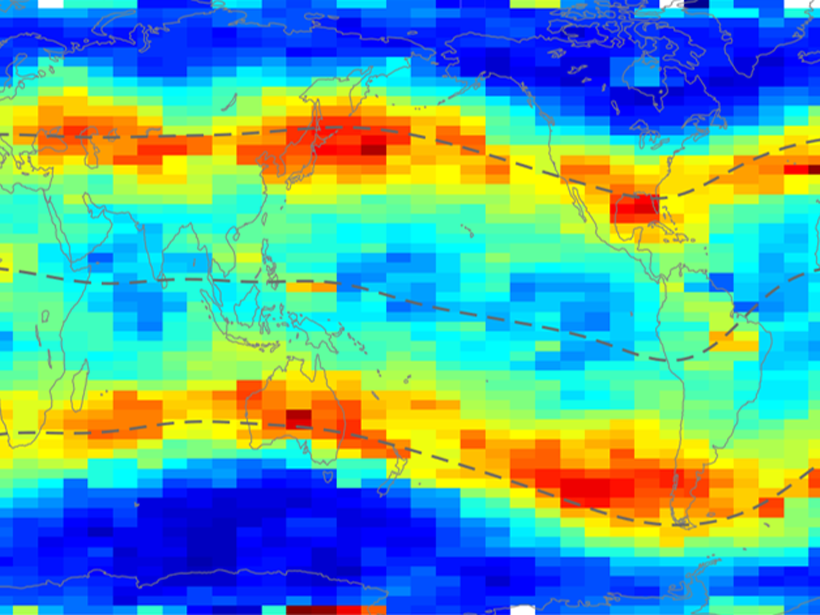Source: Journal of Geophysical Research: Space Physics
Without sunlight ionizing the upper atmosphere, one would think that the low-to-middle latitudinal nightside ionosphere would have very little charged particle density. This isn’t the case, though, and there are bands of density at approximately 40 degrees north and south magnetic latitude in the topside ionosphere (seen figure above).
A new study of electron data from the COSMIC satellite by Lei et al. [2019] has revealed the systematic properties of these density bands, and their variation with season and solar activity. With their careful analysis of this robust set of observations, they conclude that the charged particle density is maintained by the convergence of two flows – a downward flow of charge particles from the plasmasphere and an upward push from upper atmospheric winds. This keeps the charged particles at a high altitude and shelters them from recombination processes at lower altitudes. At certain times and places, the density is actually higher than it would be at that location when on the dayside.
Citation: Zhong, J., Lei, J., Yue, X., Luan, X., & Dou, X. [2019]. Middle‐latitudinal band structure observed in the nighttime ionosphere. Journal of Geophysical Research: Space Physics, 124. https://doi.org/10.1029/2018JA026059
—Mike Liemohn, Editor-in-Chief, JGR: Space Physics
Text © 2019. The authors. CC BY-NC-ND 3.0
Except where otherwise noted, images are subject to copyright. Any reuse without express permission from the copyright owner is prohibited.

